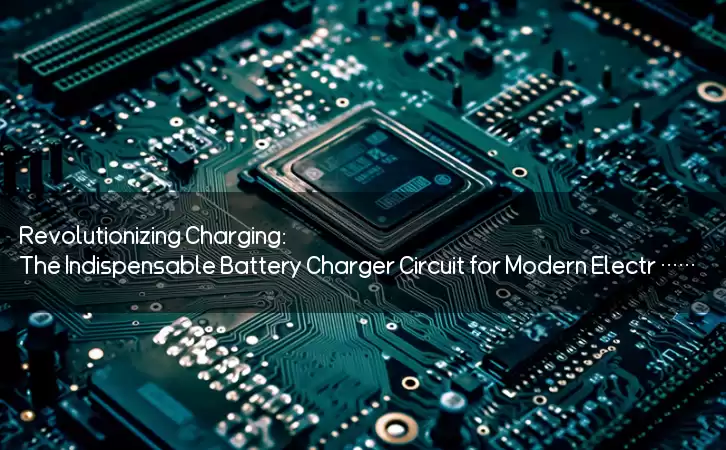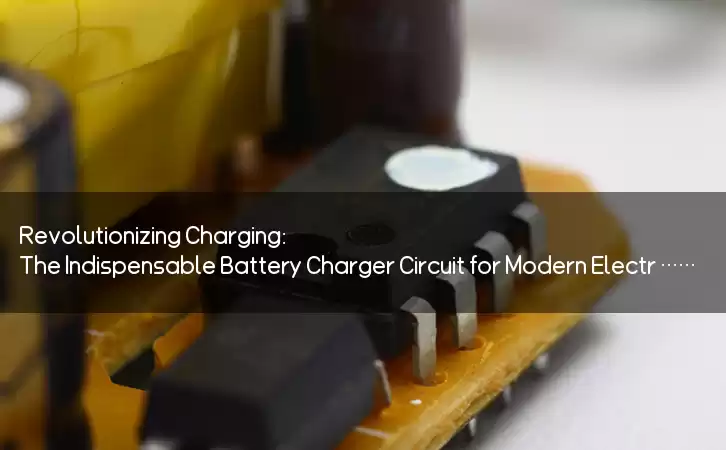Information Center
Revolutionizing Charging: The Indispensable Battery Charger Circuit for Modern Electronics
Published:2023-07-12 10:33:30 Author:Green WCND Views:83Battery Charger Circuit: An Essential Component for Modern Electronics

In today’s technology-driven world, portable electronic devices, such as smartphones, laptops, tablets, and wearable devices, have become an integral part of our daily lives. These devices operate on rechargeable lithium-ion batteries that require frequent charging to stay functional. Therefore, battery chargers play a vital role in keeping our gadgets up and running. A well-designed battery charger circuit ensures efficient charging, longer battery life, and increased safety of the battery and the device.

Battery chargers are classified into three primary types - linear, switching, and pulse charging. Linear chargers are the simplest and the most affordable, but they are also the least efficient. They charge the battery by applying a constant voltage to it, and the charging current decreases as the battery voltage increases. Linear chargers are suitable for low-power devices, such as Bluetooth earphones, wireless mice, and remote controls.
Switching chargers are more efficient than linear chargers as they use a switching regulator to control the charging current and voltage. They charge the battery by applying a high-frequency pulse-width modulated (PWM) signal to the battery. Switching chargers are suitable for moderately powered devices such as smartphones, tablets, and wireless headphones.
Pulse charging, also known as desulfation charging, is a specialized charging method that eliminates lead-acid battery sulfation, which is a common cause of battery failure. Pulse chargers apply a high-intensity electrical pulse to the battery, which removes the sulfation deposits and restores the battery’s capacity. Pulse chargers are commonly used for automotive and marine batteries.
The main components of a battery charger circuit are the power supply, the charging controller, and the charging circuit. The power supply converts the AC voltage from the mains or DC voltage from a battery or a solar panel into the required DC voltage for charging the battery. The charging controller manages the charging process by monitoring the charging voltage, current, and temperature and adjusting them according to the battery’s characteristics. The charging circuit regulates the charging current and voltage to prevent overcharging, overheating, and other safety hazards.
Modern battery chargers offer several additional features to enhance the charging process and improve the user’s experience. Some of these features include multiple charging modes for different battery chemistries, automatic shut-off when the battery is fully charged, LED indicators for battery status, USB charging ports for mobile devices, detachable cables for easy storage, and compact, lightweight designs for portability.
In conclusion, a battery charger circuit is an essential component for modern electronics that rely on rechargeable batteries. A well-designed charger circuit can ensure efficient charging, longer battery life, and increased safety of the battery and the device. With the increasing demand for portable electronic devices, the battery charger market is expected to grow rapidly in the coming years, and new technologies, such as wireless charging and fast charging, will further enhance the user experience.
Power Adapter Design and Customization Guide for Portable Electric KettlesI. Common Design Types for Portable Electric Kettle Power AdaptersPortable electric ke···
I. Common Design Types of Power Adapters External Independent Type (Most Common) Design: A standalone adapter (e.g., "black brick") connected to the p···
Handheld Vacuum Cleaner Power Adapter Selection GuideIntroductionHandheld vacuum cleaners have become a mainstream tool for household cleaning due to their port···
Drill Power Adapter Selection Guide.drill-container { font-family: Arial, sans-serif; line-height: 1.6; max-width: 800px; margin: 0 auto; padding: 20px; } .dril···





